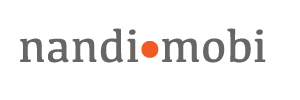Lahti Green Design Week 2021
Keynote on-line at the Lahti Green Design Week, on May 4th, 2021 –
How to sketch our future
How then can the designer draw the world of tomorrow? Draw, describe, imagine? Alok Nandi, creative director at Architempo and Spread Design, evoked the connections between innovation and design: how can design help frame approaches and decisions with an entrepreneurial mindset?
“When I’m talking about designing, it’s about looking at mindsets and tool sets for exploring the future. How are we going to sketch tomorrow? What capabilities in your universities, in your companies, are we going to have?”
Alok says that his way of looking at design is quite simple and even provocative. “Design is about making interactions between fiction, function and form.” What he means is that he would like us to go beyond the simplistic duality ‘function leads to form’, or ‘form is based on function’, which he says is a 20th-century myth. “I would like to say fiction is needed. Fiction is about looking at the future, about things which yet don’t exist.” Sketching the future is creating fiction. Designers are people that are imagining, as Christian Guellerin mentioned. Hence, he concludes “My proposition is that fiction, function and form are what keep us busy in terms of designing.”
Sketching the future, innovation led by design. This “puts the centre of gravity out of innovation led by research and develop- ment, or techno research and development, which is end 20th century paradigm.” Alok draws our attention to the need to change paradigms, and design is contributing to this change. He would be cautious to tell that design has been invented 150 years ago, which he says is a narrow view of looking at the history of design. “I think the design mindset has got many thousand years of history, and we need maybe to re-question this industrial mindset, and industrial way of looking at histories, and explore new paradigms.”
Alok adds another thought for entrepreneurs and designers: how do we move from the market-centric view to the society-centric view? “How do we zoom in; how do we zoom out? How do we make sure that we get the detail, but we have the big picture?” He continues, “How do we move from the “problem-solution” approach to the opportunity proposition?”
Following Christian Guellerin’s example of the shoe manufacturer, Alok emphasises that companies and designers need to de- scribe things and observations in new ways. We need to sketch, and we need to draw our future. We need to diagnose connections and signals, and we need to decide to choose to move on, to prototypes, to try in practice. “Prototyping is the word I’m obsessed with. How can we prototype stuff? How come that for one year we are going through the Covid cases, and we don’t have enough prototyping of services in different European regions?” Alok wonders.
“The question to the how, how are we interacting, how are we putting connections, how are we connecting the dots, is something where we need fresh thinking always, and that is what we, in our design activity, are bringing to marketers, to engineers, to managers, and we are becoming more strategic, because we are questioning the ways to reach some state.”
“How do we make sense is the essence of strategic design, and that allows us to come back to this statement: design is about making interactions between fiction, function and form.”
To conclude: how can design help frame approaches and decisions with an entrepreneurial mindset? “Context can be seen at different scale: the scale of the city, the scale of the neighbourhood, the scale of the region, the scale of the country, European scale, the planetary scale, and we have many layers where there is porosity; things are in not only layers, they are in interconnected layers. How are we envisioning scenarios considering the zooming-out and zooming-in effect? That is where design has a fundamental role to play: to sketch the future with frames, we need to figure and frame approaches and decisions. And we need what we call fresh thinking, the entrepreneurial mindset: What if? How might we? These are the questions that keep us busy.”
Excerpt from the Publication Series of LAB University of Applied Sciences, part 35
ISSN 2670-1928 (PDF) –
ISSN 2670-1235 (print)
– ISBN 978-951-827-390-8 (PDF) – ISBN 978-951-827-391-5 (print)
